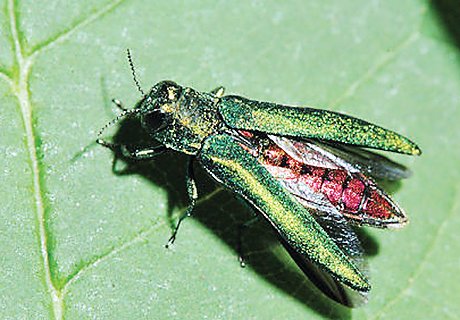Support the Timberjay by making a donation.
Arctic outbreak likely took a toll on emerald ash borer
REGIONAL— There’s a silver lining in the most recent cold snap in Minnesota. While most people found the cold temperatures an inconvenience, for some of the state’s invasive insect pests, the …
This item is available in full to subscribers.
Attention subscribers
To continue reading, you will need to either log in to your subscriber account, or purchase a new subscription.
If you are a current print subscriber, you can set up a free website account and connect your subscription to it by clicking here.
If you are a digital subscriber with an active, online-only subscription then you already have an account here. Just reset your password if you've not yet logged in to your account on this new site.
Otherwise, click here to view your options for subscribing.
Please log in to continue |
Arctic outbreak likely took a toll on emerald ash borer
REGIONAL— There’s a silver lining in the most recent cold snap in Minnesota. While most people found the cold temperatures an inconvenience, for some of the state’s invasive insect pests, the cold likely proved deadly.
According to forest health specialists with the Department of Natural Resources, the recent outbreak of the polar vortex, which pushed brutally cold air temperatures all the way into southern Minnesota, likely killed off a significant portion of the emerald ash borer population in the state.
The invasive pest has devastated native ash forests elsewhere in the United States, and it’s been gaining an ever-larger foothold here in Minnesota as winters have grown warmer.
Emerald ash borer larvae overwinter under the bark of ash trees. The larvae, like many overwintering insects in cold regions, generate chemicals to prevent their cells from freezing when temperatures dip, just as salt helps thaw ice and snow even in temperatures well below freezing.
But such defenses against the cold have their limits. “When temps get to -30° F, 70-90 percent of larvae may be frozen,” says Rob Venette, a USDA Forest Service research biologist.
The extreme cold doesn’t have much of an effect on Minnesota’s native forest pests, which are well adapted to cold winter temperatures. The eastern larch beetle, for example, can survive down to minus-56 degrees F as larvae and minus-43 degrees F as adults. In addition, many adult larch beetles overwinter under the snow line, which insulates them against low air temperatures, according to the DNR. The eastern larch beetle has become a major pest for tamarack in northern Minnesota, having wiped out hundreds of thousands of acres of tamarack forests in recent decades— and it will take more than cold to stop it.






